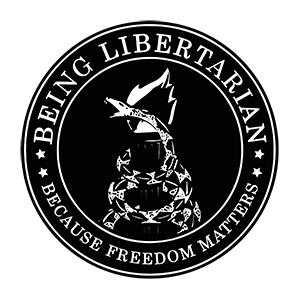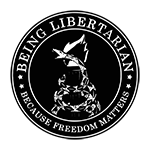
It would be so much easier if the good guys could align together against the bad guys. The lines would be drawn, and we could go from there. But, of course, it’s not that simple. In almost every case, the “bad guys” think they are the “good guys.” And in most cases of ideological conflict, there is not an easy line of disagreement on issues. Most often, it’s a spectrum. For example, we have issues like abortion, where one side is against it, and the other side isn’t against it, with a lot of people somewhere in between.
But in the larger context, the ideological conflict isn’t anywhere near this simple. We use terms like “left” and “right” to get our point across, but very rarely can anyone actually define what these terms mean, although there certainly seems to be something to them.
Some people will say that the real divide isn’t left vs right, but freedom vs tyranny. But this view is only held by libertarians. Some people value social order or equality over freedom, or value them all to a moderate extent. Then there are those who view private property as contrary to freedom, and others who see the two as inseparably aligned.
But even this is too superficial. The conflict isn’t necessarily ideological, because only some political activists are wedded to a specific ideology. Most people just want to go about their day and preserve the things they care about. Instead, the true conflict underlying all of this is a conflict of visions.
Certain political philosophies may fit better with one vision than the other, but the vision one holds is the very foundation of one’s worldview. One’s vision is not necessarily consciously understood. One can have an optimistic or pessimistic outlook on life, but they do not need to consciously view themselves as holding the “optimistic” or “pessimistic” outlook.
This concept of two underlying visions was formulated by Thomas Sowell in his A Conflict of Visions. He puts forth what he considers to be a more accurate spectrum of thought, with the constrained vision (or “tragic vision”) on one side, and the unconstrained vision (or “vision of the anointed”) on the other side. Being someone who aligns with the constrained vision, he later critiqued the unconstrained vision in his The Vision of the Anointed, and then again later in his The Quest for Cosmic Justice.
Sowell explains that these two visions hold different views of human nature and the way that society functions.
The Vision of the Anointed, p105.
The primary difference between these two visions is their view of problem-solving. The tragic, or constrained, vision, says it right in the name. Human nature is largely static. There are certain problems we will always have because they are built into an unchanging human nature. We will always have murder, theft, rape, etc., so long as humanity exists. Ideally, the goal should be to eliminate these, but this will never happen, so we should do what we can to reduce them.
Resources are also finite. For every bit of time and money we put towards solving a problem, this is time and money that could have been put towards something else. For every dollar that is put towards curing cancer, that is a dollar that could have gone towards feeding a starving family. In other words, to the tragic vision, there are “no solutions, only trade offs.”
The unconstrained vision sees humanity’s opportunities as essentially limitless. They are much more optimistic about the good we can achieve, if we put our minds to it. Perhaps we could achieve a world without murder, or rape, or theft. We would just need to improve society in a way that stops these things from happening, through education.
The constrained vision typically takes a much more decentralized approach to systems. Society is a system of incentive structures and decision-making processes that functions through millions of tiny actions. This often (though not necessarily) leads to a conclusion in support of a free market, which will, of course, by no means be perfect, but such a decentralized process with proper incentives will generally lead to beneficial outcomes.
Meanwhile, the unconstrained vision takes an approach sympathetic to rule by philosopher-kings. What we need is to have the right people in power. If a team of intelligent scientists ran the world, they would be able to fix problems with top-down solutions. This vision is much more optimistic regarding the ability of society’s most intelligent to solve societal issues.
These visions adopt different approaches to justice.
The constrained view sees justice more as a process. People are “equal” in the sense that they are equal under the law, and justice is less about the conclusions, but more about the process itself. Those with the constrained vision tend to take a more textualist approach regarding law. A system is just based on the process, not the outcome.
The unconstrained vision views justice in the opposite sense. A system is just based on an evaluation of the outcomes. For this reason, those with the unconstrained vision will be more concerned with the outcomes of the law rather than the process itself. Affirmative action might apply the law unequally, but the outcomes are more equal, and thus more just according to the unconstrained vision.
Typically, the unconstrained vision is seen as a more left-wing mindset, and the constrained vision as a more right-wing (specifically conservative) mindset, but to exchange these terms for left and right would be to miss the point. Spreading democracy to the Third World, as the neoconservatives aimed to do, is far more characteristic of the unconstrained view.
Winning hearts and minds is not as easy when two people are of different visions. If a certain problem can be solved if we all put our minds to it, the constrained vision must seem pretty awful. But if everything in life is a trade-off, the unconstrained vision can do quite a bit of damage by making one issue the sole problem, regardless of how their means of fixing one problem may affect other problems.
With these visions in mind, today’s ideological divide becomes clearer. What we are witnessing is not a simple disagreement of political views, but instead a clash of two irreconcilable visions. If one is true, the other is then dangerous and destructive. Although Sowell would say the tragic vision is correct, a discussion on these visions would be far more productive than a lot of the discourse that goes on today.







